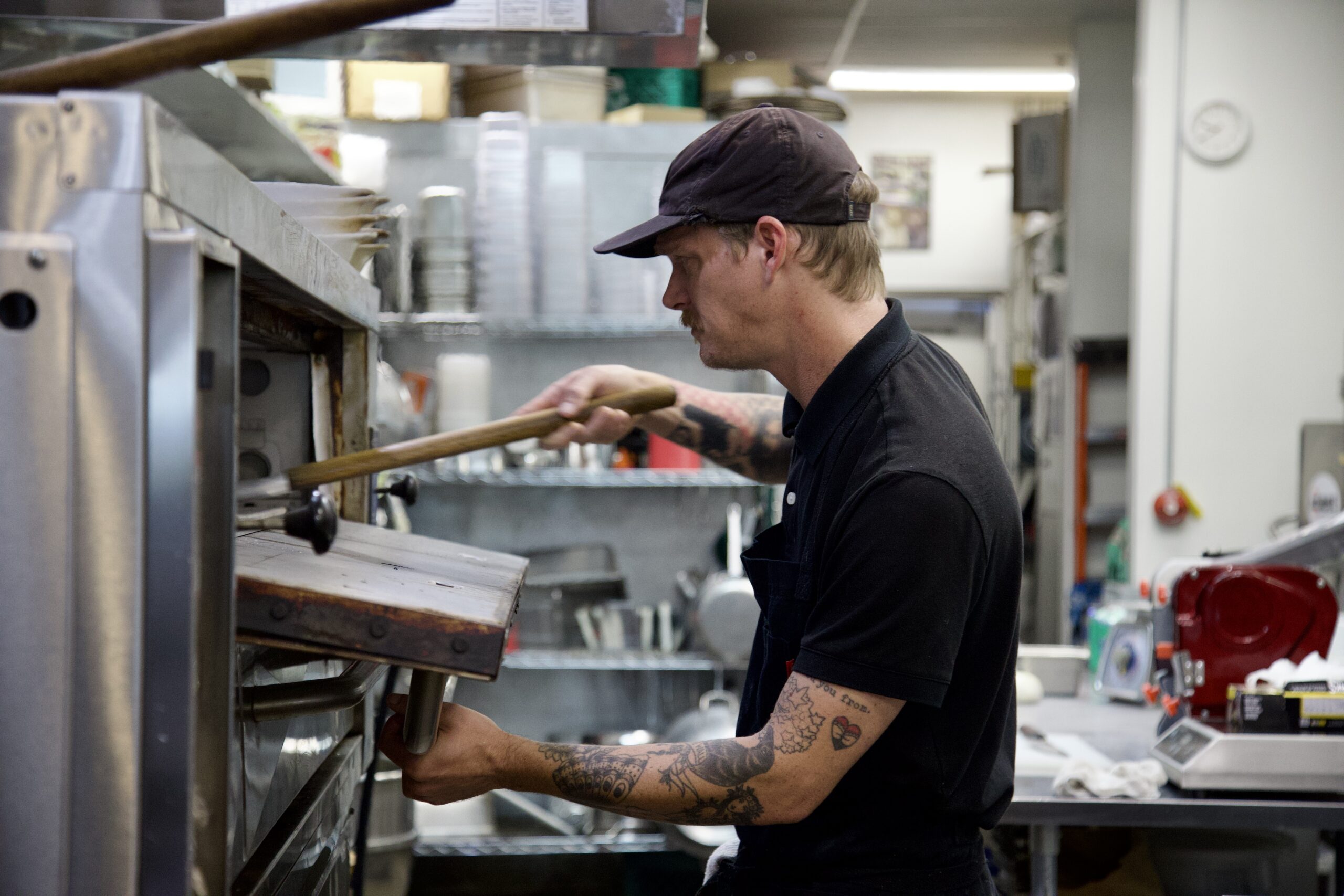
One thing that I learned while writing my upcoming book, The Lost Restaurants of Tucson for The History Press was that even though many restaurants were popular and lasted for a long time, little information about them can be found.
Katherine & Co. is a prime example. Even though many people told me that I must include this place in my book the only thing I found was an old menu in a compilation book. Katherine Kerr owned it. Her husband was Charles Kerr of Charles fame. But beyond that, nada.
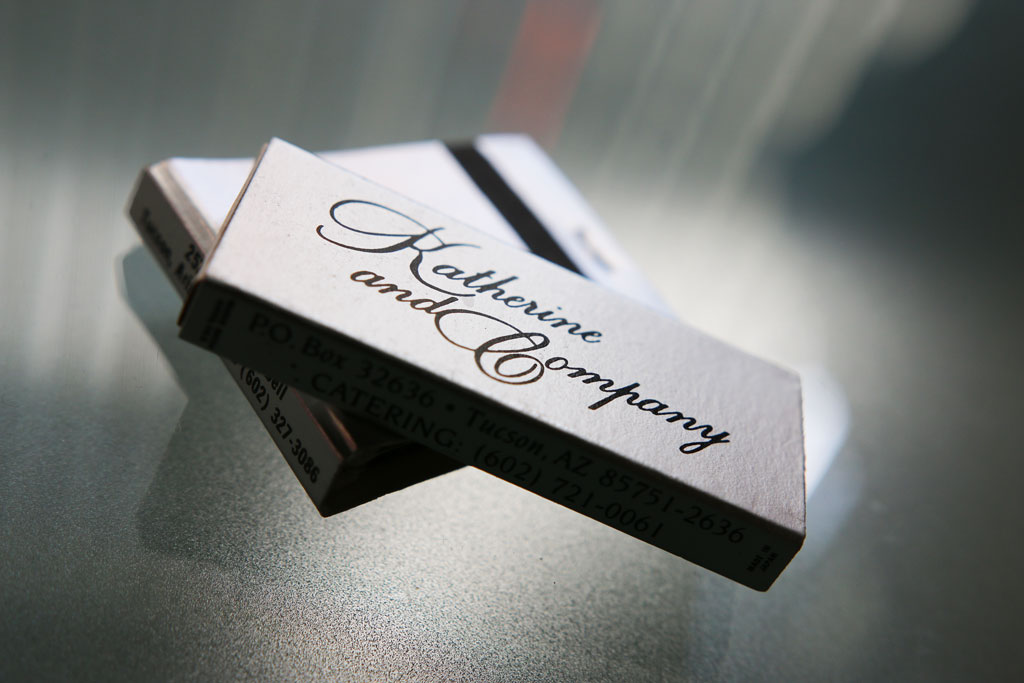
Trost Bakery is another place that left behind only memories. The Hot Bagel Bakery had three locations and taught Tucsonans what a real bagel looked and tasted like, but as far as information about it, deep research revealed nothing.
And finally, Coffee Etc. This 24-hour restaurant was roasting coffee beans locally long before all those other places in town. The food here was innovative as well. There were a couple of sites in town (the one on Campbell Ave. was the main one), but after it closed abruptly, any information on the place vanished.
The following is a condensed list of iconic Tucson restaurants. Some are included in my book, released on December 7, 2015, “The Lost Restaurants of Tucson.” The reason for not including some of the others has more to do with space and not because they didn’t deserve mention.
You’ll note that several of these restaurants were on Tanque Verde Road. For those who don’t remember, that area was once known as Restaurant Row.
The Bum Steer was one of those kinds of places where people could take their kids and their parents. Part of the fun was the eclectic mix of stuff hanging from the ceilings and walls which included everything from an entire airplane to street signs. Burgers were popular and, like the décor, there was an interesting mix of choices (one even had peanut butter on it.) At night, the Steer morphed into a nightclub with no one under 21 allowed. Sadly, it closed due in part to owners not being able to get a liquor license. Today the hulk of a building stands guard complete with all the crazy things still inside.
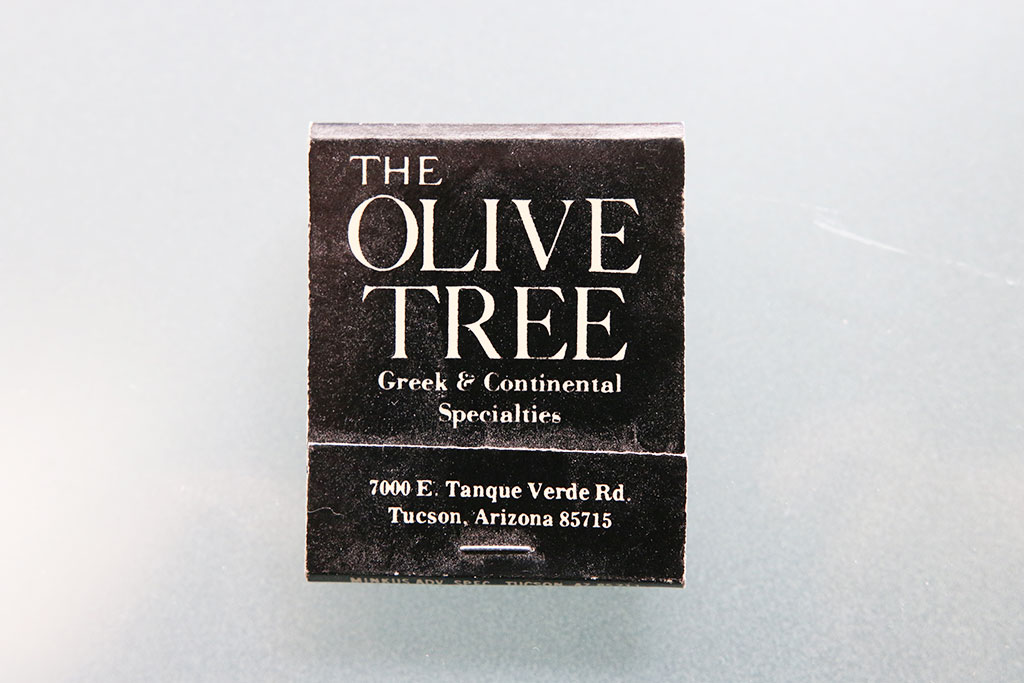
The Olive Tree was the place to go for great Greek food and outstanding service. Owners John and Leslie Condiss offered a place where regulars could feel at home and newcomers were treated like family. Lamb was big on the menu and came in a wide variety of iterations. It speaks volumes that even though the Condiss’ divorced they still ran the business together for years. The Olive Tree closed in 2008 after the city enacted a smoking ban that affected the profit margin deeply.
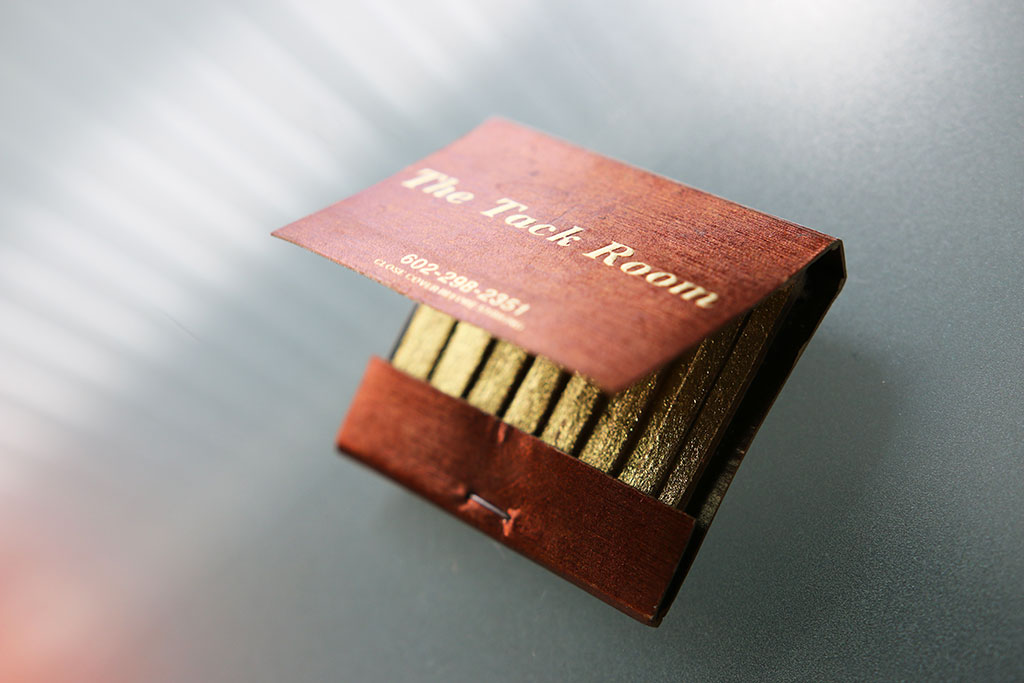
The Tack Room was the definition of fine dining for nearly forty years. When it opened in 1965, it was the only fine dining restaurant in Arizona and became an immediate success. Drew Vactor took over the reins in 1974 and he, along with his wife Kandie and a passionate team, ran the place with elegance and grace. Dinner was served by tuxedoed waiters who seemed to know what you wanted before you did. Food was a mix of old Continental standards and undated versions of them. It was the first restaurant in the Southwest to win Mobil Travel Guide Five Star Award (1977) and continued to earn that title for almost twenty years. Bob McMahon took over in 2000, but times were changing and The Tack Room closed in 2003.
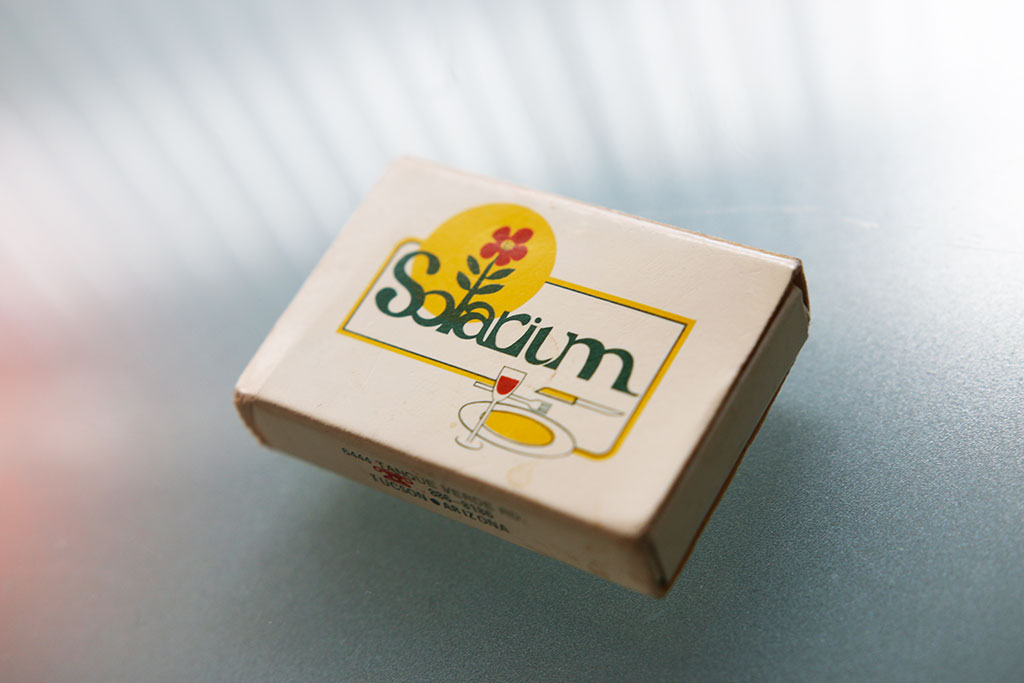
People had never seen anything quite like The Solarium, at least not in Tucson. A three-story split-level building that was all glass and wood and metal and cement. It was open and airy and yet dining there was very private and romantic. The menu was large and eclectic. Fish and seafood, steaks and sandwiches, salads, soups could all be found on the menu. Chef Jonathan Landeen, of Jonathan’s Cork, was chef here for several years. In May of 1999, The Solarium burned to the ground. The cause was labeled arson.
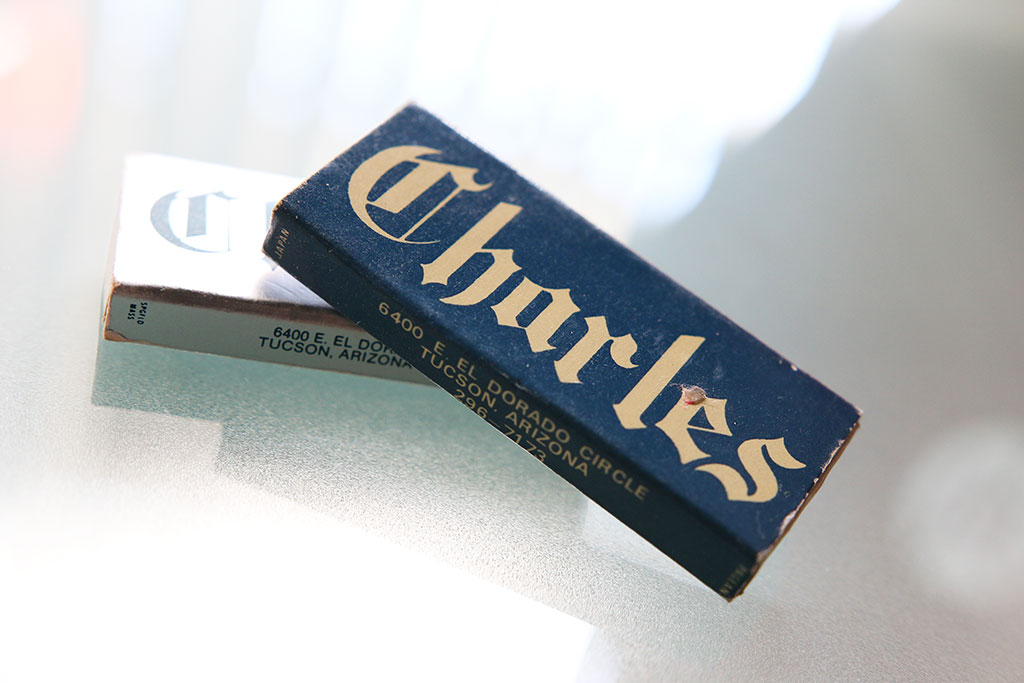
When Charles Kerr opened his eponymous restaurant, people were excited. Kerr, after all, had been the maitre’d at The Tack Room for years, and it was his charm and professionalism that many folks remembered about dining at The Tack Room.
Kerr extended that elegance to his own place. Men had to wear jackets (there was an “emergency” closet full of jackets in case someone forgot); dishes were prepared tableside by well-dressed male servers; a pianist played in the lounge. The views out the huge picture windows were divine. The kitchen broke everything down from scratch and then created such plates as osso buco, lamb shank, steak tartare and a long list of original plates. A house favorite was Veal Charles, veal cutlets topped with wild mushroom sauce. All breads and desserts were made in-house.
Dining at Charles was an evening to remember.
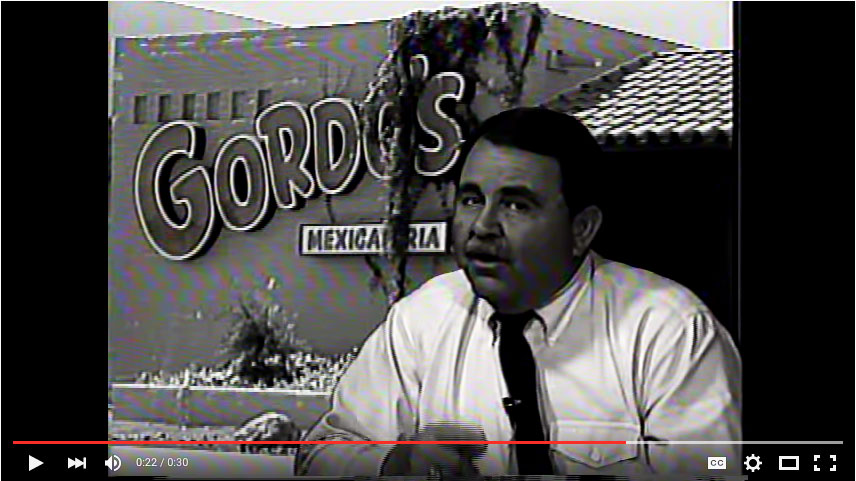
Say the name Gordo’s to anyone of a certain age and the response is automatically, “Do you like chimichangas? I mean do you really like chimichangas?”
That was Al Valenzuela’s catchphrase. Valenzuela himself would appear on the commercials for years.
Gordo’s made chimis famous. The restaurant sold thousands and thousands of them over the thirty years it was in business. (They had a commissary just for making the chimis, which came in various sizes.) The food here was served cafeteria-style, but all of it was made from scratch, daily. Chimis weren’t the only thing that rocked; the beans were fab, and even simple tacos were tasty.
Generations of people ate at Gordo’s not just because the food was so good, but because everyone felt like family. Al and his wife Julie were there every day with big smiles and lots of hugs.
Over the years there were several sights for Gordo’s, but they finally settled on the far eastside. People thought nothing of driving miles to eat there.
The Valenzuelas sold the place in 2002, and it closed two years later.
When you ask around about iconic restaurants in Tucson, The Palomino inevitably is mentioned.
People remember The Palomino for its outstanding Continental fare and exquisite service. Mary and John Gekas had been in the hospitality industry for decades (John actually first opened The Palomino in 1948, sold it and then reopened it), but it is The Palomino that most folks remember.
Exquisite Continental fare mixed with elegant service came together to create a special evening whether you were a regular or a first-timer. Tableside service included everything from Caesar salad to Chateau Briand to flaming cherries jubilee.
Mary was the perfect hostess; warm, stylish, professional and running the front of the house with a firm, but gentle hand.
Guests included George C. Scott, Paul Newman, Willie Nelson and President Gerald Ford.
John died in 1982. Mary and son, Jim, then ran the place, finally closing The Palomino in 1994.
Mary died in 2006.
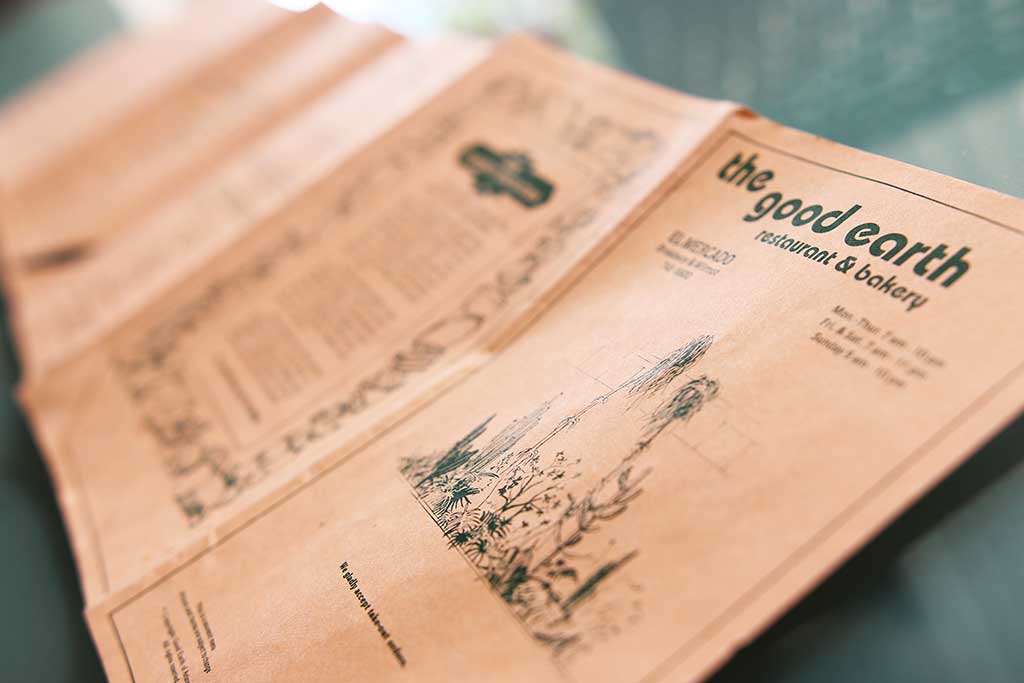
Born at the height of hippiedom, The Good Earth proved that one could eat healthfully and eat well.
Their baked goods were legendary and delicious. Breakfasts included ten-grain sourdough pancakes and huevos rancheros with adzuki beans and pinto beans, green chiles, cheese, Spanish Basque sauce and salsa. The house-made granola rocked.
Vegetarian dishes shone, but red meat lovers could still find such dishes as beef stroganoff and a creamy Cajun chicken. Pastas were aplenty and included a spinach pasta lasagna and linguini in a pesto sauce (almost unheard of in Tucson at that time) with fresh salmon.
The menu ran about eleven pages long with a daily specials menu typed every morning.
Owner Norm Land ran into some problems in the late ‘90’s over using the name, The Good Earth. Apparently, there was a corporation with the same name in California. Research shows both that Tucson’s Good Earth was part of that franchise and that it wasn’t. Either way, Land was forced to close his popular restaurant. He later reopened under the name Terra Nova.
It didn’t last very long.
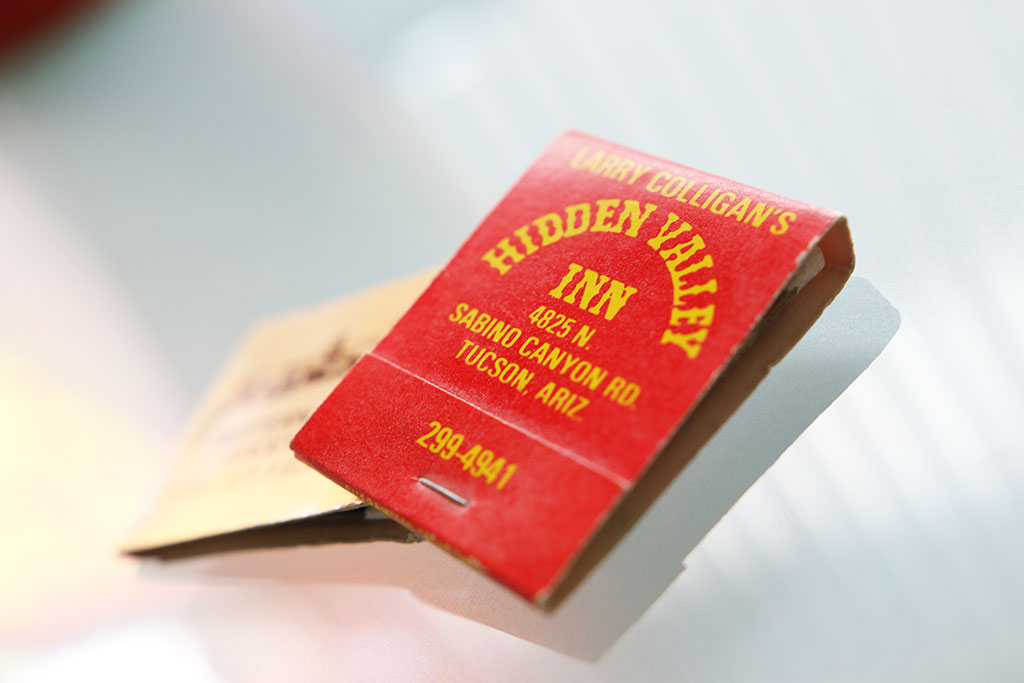
Talk about a steakhouse! This far eastside spot was the place for steaks and ribs. Served western style, that means a small salad made with iceberg lettuce, ranch beans AND a baked potato with all trimmings. The ribs were some of the best in town. Run by the Colligan family, The Hidden Valley Inn was immensely popular,
Décor included everything cowboy and then some. Saddles and spurs, branding irons and boots, photos of cowboys and cattle, covered wagons, water pumps and on and on. Then there was the huge diorama that included a dusty cow town and an assortment of denizens, a circus with moving parts and much, much more. It was free entertainment for all ages.
The main dining room seated well over 300 people (after a huge fire seating was expanded to almost 700) with seating in the bar, called The Red Garter Saloon. On weekends there was always live entertainment in the Crystal Palace Saloon.
The Hidden Valley Inn was the place to take out-of-towners for a taste of “The Old West.” Locals loved it too, most nights there was a line out the door.
A fire that originated in the kitchen in 1995 nearly shuttered the place but the Colligan family persevered. They eventually sold the place; the new owners ran it for 10 years before finally closing this iconic restaurant in 2006
The Lost Restaurants of Tucson originally published on December 7, 2015.
Rita Connelly is the author of “Lost Restaurants of Tucson,” “Historic Restaurants of Tucson,” and “Arizona Chimichangas,”all published by The History Press. Growing up in a large Italian family instilled in her an appreciation for the important role food plays...